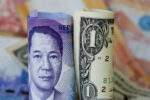Asian nations are emerging as global leaders in the race toward sustainable transportation, making significant strides in reducing carbon emission and fostering economic resilience, according to Timothy John Batan, undersecretary of the U.S. Department of Transportation.
Speaking at the closing of the 16th Environmentally Sustainable Transport (EST) Forum, Batan highlighted the impressive progress made by Asia in recent years. “These achievements position Asia at the forefront of the global shift toward sustainable transport,” he said, citing the region’s key role in transitioning to low-carbon transport systems.
Among the most notable developments, Batan pointed to Asia’s leadership in cutting fossil fuel subsidies, spearheading road construction, and expanding rail networks since the adoption of the Sustainable Development Goals (SDGs). Moreover, Asia has become the epicenter of the global electric vehicle (EV) revolution, with rapidly growing investments and infrastructure supporting widespread EV adoption.
Despite these achievements, Batan acknowledged that challenges remain in fully realizing the region’s sustainable transport potential. “While progress has been substantial, roadblocks remain,” he noted, referring to the ongoing hurdles in meeting the SDGs. However, he expressed optimism, noting that the rising awareness of the climate crisis has contributed to a significant increase in the Asia-Pacific region’s climate ambition. In 2024, the region’s climate commitment soared by 93%, signaling a newfound urgency to tackle transportation-related emissions.
Batan urged continued action, emphasizing the importance of proactive leadership in driving sustainable change. “It is our responsibility to initiate change, not just respond to it,” he asserted, calling on governments and businesses alike to sustain momentum toward a cleaner, more resilient transportation future.
As Asia continues to lead the charge in sustainable transport, the region’s innovations may serve as a blueprint for the rest of the world, paving the way for a greener, more connected global economy.







